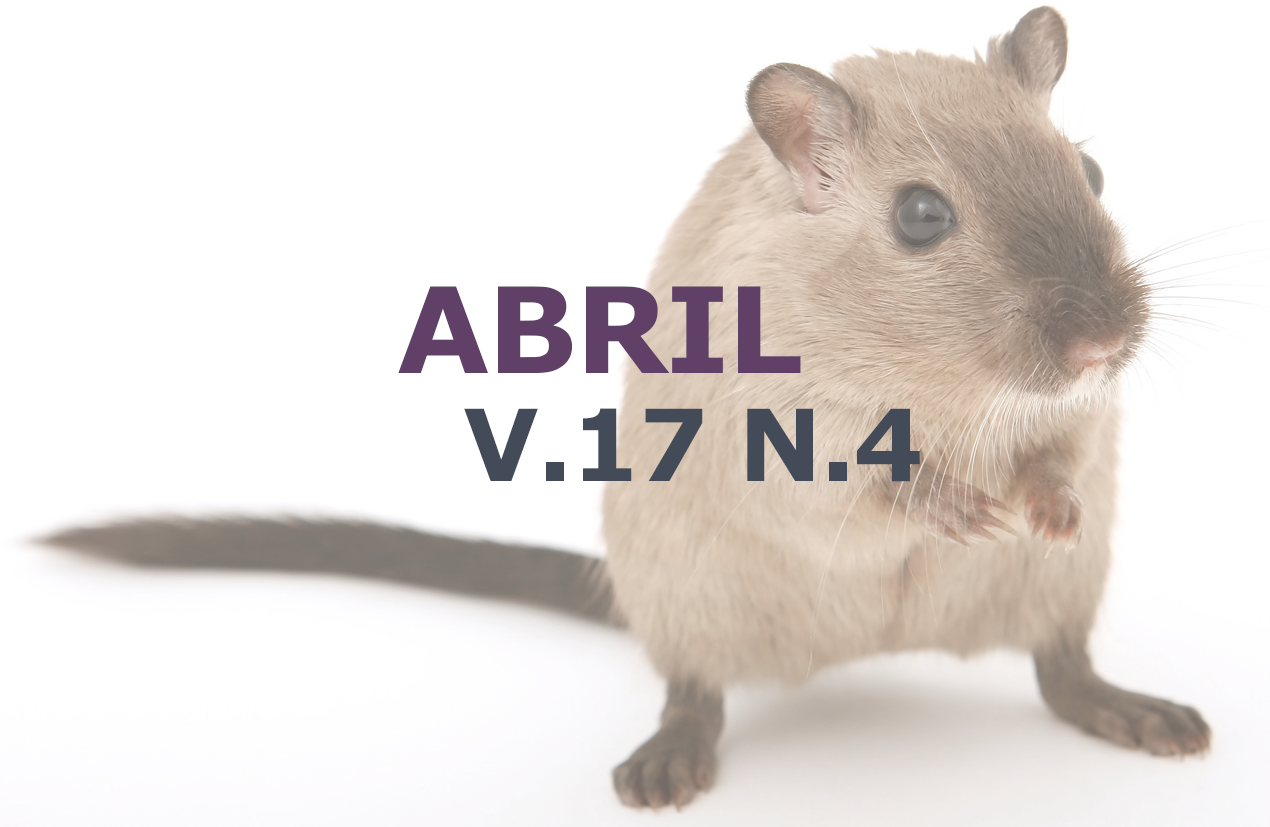Canine appendicular osteosarcoma: Amputation and chemotherapy in cancer treatment
DOI:
https://doi.org/10.31533/pubvet.v17n4e1379Keywords:
amputation, chemotherapyAbstract
Osteosarcoma is a malignant bone neoplasm with a high incidence in adult and giant breed dogs, with the appendicular skeleton being the most affected compared to the axial one. The symptoms usually present are claudication, swelling and may or may not be associated with episodes of fractures. The diagnosis consists of imaging exams, and in many cases, confirmation is only possible through bone biopsy. Due to aggressiveness the prognosis is unfavorable, and the best treatment for this case is limb amputation, with the intention of removing the primary tumor. The dog, in this report, was diagnosed by bone biopsy, whose histopathological result was osteoblastic osteosarcoma. The tumor originated in the distal femur of the left pelvic limb and the patient was referred for amputation, the surgical technique used was coxofemoral disarticulation. As an adjuvant treatment, chemotherapy with carboplatin was instituted. There were fivw sessions in an interval of 21 in 21 days, without reaction or alterations in the complementary exams. Pulmonary macro metastases were not identified in the radiographic examination, and a disease-free interval was observed, guaranteeing quality of life for the patient, despite being a very aggressive tumor.
References
Araújo, B. R. M., Sousa, V. O. de, Aragão, A. P., & Paiva, M. G. A. (2018). Osteossarcoma renal em cadela: Relato de caso. PUBVET, 12(10), 1–5. https://doi.org/10.31533/pubvet.v12n10a197.1-5.
Boerman, I., Selvarajah, G. T., Nielen, M., & Kirpensteijn, J. (2012). Prognostic factors in canine appendicular osteosarcoma–a meta-analysis. BMC Veterinary Research, 8(1), 8–56.
Cavalcanti, J. N., Amstalden, E. M. I., Guerra, J. L., & Magna, L. C. (2004). Osteosarcoma in dogs: clinical-morphological study and prognostic correlation. Brazilian Journal of Veterinary Research and Animal Science, 41(5), 299–305. https://doi.org/10.1590/s1413-95962004000500002.
Chaves, L. D. C. S., Silva, F. L., Silva, C. R. A., Sousa, J. M. C., Oliveira, J. R. de A., Silva, L. S., & Santos, L. P. (2020). Osteossarcoma em cão Border Collier. PUBVET, 14(1), 1–5. https://doi.org/10.31533/pubvet.v14n1a492.1-5.
Cooley, D. M., Beranek, B. C., Schlittler, D. L., Glickman, N. W., Glickman, L. T., & Waters, D. J. (2002). Endogenous gonadal hormone exposure and bone sarcoma risk. Cancer Epidemiology Biomarkers and Prevention, 11(11), 1434–1440.
Daleck, C. R., Fonseca, C. S., & Canola, J. C. (2016). Oncologia em cães e gatos. Roca.
DeRegis, C. J., Moore, A. S., Rand, W. M., & Berg, J. (2003). Cisplatin and doxorubicin toxicosis in dogs with osteosarcoma. Journal of Veterinary Internal Medicine, 17(5), 668–673. https://doi.org/10.1892/0891-6640(2003)017<0668:CADTID>2.3.CO;2.
Dimopoulou, M., Kirpensteijn, J., Moens, H., & Kik, M. (2008). Histologic prognosticators in feline osteosarcoma: a comparison with phenotypically similar canine osteosarcoma. Veterinary Surgery, 37(5), 466–471.
Ehrhart, N. (2005). Soft-tissue sarcomas in dogs: a review. Journal of the American Animal Hospital Association, 41(4), 241–246. https://doi.org/10.5326/0410241.
Fossum, T. W. (2015). Cirurgia de pequenos animais (3ed.). Elsevier Editora.
Kirpensteijn, J., Kik, M., Rutteman, G. R., & Teske, E. (2002). Prognostic significance of a new histologic grading system for canine osteosarcoma. Veterinary Pathology, 39(2), 240–246. https://doi.org/10.1354/vp.39-2-240.
Lima, R. T., Gomes, M. S., Negreiros, V. M., & Nascimento, L. F. M. (2017). Osteossarcoma canino: Relato de caso. PUBVET, 11(12), 1239–1244. https://doi.org/10.22256/pubvet.v11n12.1239-1244
Marconato, L., Buracco, P., Polto, G. A., Finotello, R., Stefanello, D., & Skor, O. (2021). Timing of adjuvant chemotherapy after limb amputation and effect on outcome in dogs with appendicular osteosarcoma without distant metastases. Journal American Veterinary Medical Association, 259, 749–756. https://doi.org/10.2460/javma.259.7.749.
Oliveira, F., & Silveira, P. R. (2008). Osteossarcoma em cães (revisão de literatura). Revista Científica Eletrônica de Medicina Veterinária, 4(11), 1–7.
Santos, S. L., Fenner, B. B., Weber, P. R., Guidolin, L. L., & Gauer, N. G. (2021). Osteossarcoma apendicular em felino: Relato de caso. PUBVET, 15(10), 1–4. https://doi.org/10.31533/pubvet.v15n10a947.1-4.
Simpson, S., Dunning, M. D., Brot, S., Grau-Roma, L., Mongan, N. P., & Rutland, C. S. (2017). Comparative review of human and canine osteosarcoma: morphology, epidemiology, prognosis, treatment and genetics. Acta Veterinaria Scandinavica, 59(1), 71. https://doi.org/10.1186/s13028-017-0341-9.
Skorupski, K. A., Uhl, J. M., Szivek, A., Frazier, S. D. A., Rebhun, R. B., & Rodriguez, C. O. (2016). Carboplatin versus alternating carboplatin and doxorubicin for the adjuvant treatment of canine appendicular osteosarcoma: A randomized, phase III trial. Veterinary and Comparative Oncology, 14(1), 81–87. https://doi.org/10.1111/vco.12069.
Trost, M. E., Kommers, G. D., Brown, C. C., Barros, C. S. L., Irigoyen, L. F., Fighera, R. A., Inkelmann, M. A., & Silva, T. M. (2012). Primary bone neoplasms in dogs: 90 cases. Pesquisa Veterinaria Brasileira, 32(12), 1329–1335. https://doi.org/10.1590/S0100-736X2012001200018.
Downloads
Published
Issue
Section
License
Copyright (c) 2023 Bárbara Cristina Amorim Ferreira, Daniela Santos Medeiros Oliveira, Kaio Felipe da Silva Crispim, Lorrana Nery Pereira, Rafaela Ferreira Miléo, Raquel Silva Leite, Thais Sousa Martins, Vena Mota de Castro

This work is licensed under a Creative Commons Attribution 4.0 International License.
Você tem o direito de:
Compartilhar — copiar e redistribuir o material em qualquer suporte ou formato
Adaptar — remixar, transformar, e criar a partir do material para qualquer fim, mesmo que comercial.
O licenciante não pode revogar estes direitos desde que você respeite os termos da licença. De acordo com os termos seguintes:
Atribuição
— Você deve dar o crédito apropriado, prover um link para a licença e indicar se mudanças foram feitas. Você deve fazê-lo em qualquer circunstância razoável, mas de nenhuma maneira que sugira que o licenciante apoia você ou o seu uso. Sem restrições adicionais
— Você não pode aplicar termos jurídicos ou medidas de caráter tecnológico que restrinjam legalmente outros de fazerem algo que a licença permita.





